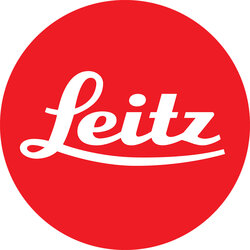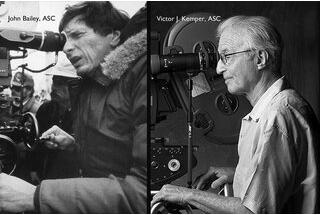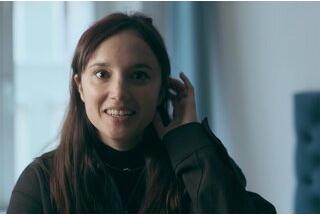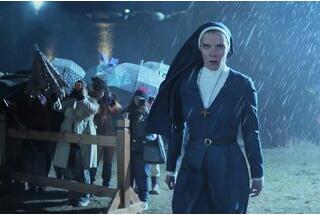Benoît Delhomme, the eye, the hand… and beyond
By Ariane Damain-Vergallo for Leitz Cine WeltzarIn 1964, when L’Oreal acquired Lancôme and, in the process, fired Georges Delhomme, the impact was so strong and so personal that to this day, Georges’ grandson is still slightly apprehensive before accepting to shoot a commercial for Lancôme. A tribute of sorts to his admired grandfather, the “creator of beauty” who, as a child, kept company with such great painters as Edgar Degas and Auguste Renoir.
It is all in the genes, one hears, but sometimes the artistic bend skips one generation – or does it? Benoît Delhomme’s father chose to become a surgeon – and more specifically, a urologist. Worlds away from “creative art,” one might think. Yet doesn’t that discipline require the sharp eye and precise gestures one assumes define an artist?
And how impressive it was for their four children to see their white-coated father be on call 24/7 then rush to the hospital to operate on a patient, or to watch their speech therapist of a mother help people actually recover their speech.
In short, both of Benoît Delhomme’s parents were saviors.
They were also sincere and passionate film lovers and they could argue for hours after seeing Jean Eustache’s The Mother and the Whore.
Benoît Delhomme still winces when he remembers those disputes and, to this day, admittedly feels that having the same taste (or distaste) in terms of cinema might be a stepping-stone toward conjugal bliss.
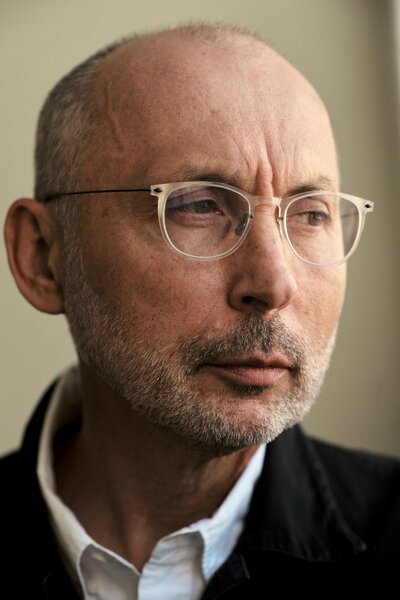
Before moving to Paris at the age of 20, Benoît Delhomme lives with his family, first in the Paris suburb of Sarcelles, in one of those 1960s-built housing projects, then in Cherbourg, the town that director Jacques Demy, with his Umbrellas, turned into the ultimate Fairyland. It is here that young Benoît, then 14, has a revelation.
In the confinement and solitude of a dimly yellow-lit photo-lab, floating midway up the tray containing the developing bath, a black-and-white image gradually appears.
Pure magic.
Perhaps more than the act of taking a picture – watching, divining then capturing the moment - it is the developing and printing of silver-based photographs that trigger Benoît Delhomme’s vocation.
“That is the day I was truly reborn,” he says.
His parents convince him, however, that cinema is a more lucrative activity than photography. He therefore opts for the Louis-Lumière Film School’s competitive entrance exam… and gets in (albeit on his second attempt).
At the Louis-Lumière Film School, Benoît Delhomme is one of the many shy, introverted students that teachers terrify with their job descriptions: “It is imperative to protect the film stock from light. Avoid at all costs letting it to fog up. Do not over-expose. Do not under-expose. And no blurred, out-of-focus images.”
Far from encouraging him to excel, that "fear culture" so demoralizes him that his only escape, he feels, is to go watch a film with a girl and thus (hopefully) seduce her.
Post-graduation times turn out even worse. Benoît Delhomme feels he has hit rock-bottom when he ends up a trainee on [French TV channel] TF1 evening newscast, all the more so as his being second assistant camera on what is touted to be that year’s “Production of the Year” - Claude Berry’s Jean de Florette and Manon of the Spring, starring Gérard Depardieu and lit by ace cinématographer Bruno Nuytten - does not seem to make him any happier. In fact, he is quite miserable.
However, overcoming his reluctance, Benoît Delhomme accepts one last film as first assistant camera.
Ten weeks of night shoot at a highway rest-stop, “a nightmare,” he says, despite Catherine Deneuve’s luminous presence.
"To access the cinematographer’s paradise, you have to go through this bridge where the living dead try to tear your feet out," he says in what might be termed, ahem, an opaque metaphor.
No, technique is definitely not for him.
He is just a little over 30 when, finally, the gates of Heaven crack ajar as he is “miraculously” offered to design the light scheme on Tran Anh Hung’s first film, The Scent of Green Papaya (1993). The actors are unknown, they speak only Vietnamese and the film is to take place on a street of Saïgon entirely rebuilt on the set in Paris. A huge challenge… and a huge success: the film wins the Caméra d’Or at the Cannes Film Festival, is nominated for the Academy Awards and wins that year’s César for Best First Feature. No room for doubts anymore.
“I felt good and in my place, nothing could scare me any longer.”
All through the 1990s, Benoît Delhomme considers himself an moving picture purist on a mission. He collaborates with such great French directors as Jean-Jacques Beineix, Cédric Klapisch and Benoît Jacquot, then, at the outset of the 2000s, focuses almost exclusively, career-wise, on American cinema.
Sidebar. A few years prior, unbeknownst to everyone (a return to his childhood?), he has started painting large canvases that he will keep hidden for a good twenty years.
At the end of each shoot, he likes to hole up in the silence and solitude of his studio, confront the canvas against the wall that has been waiting for weeks, grab a brush and paint, disgorging the flood of ideas the film has triggered in him.
The gesture begets the image, as is the case when he films actors’ faces, an endless mystery, in his view.
For Benoît Delhomme considers the actor as his alter ego, a "brother" whose approval, even affection, he ardently seeks.
Over three films shot in the United States, he rubs shoulders with legendary star Al Pacino. At first, Pacino observes him – no, gauges him - with his cold black eyes. Then he finally “knights” him into his inner circle; going as far (or close) as touching him before each take as he would an amulet, saying, “Benoît, you are here to capture my soul."
To be part of Al Pacino’s magic circle is like "the ultimate medication against the anxiety inherent to cinema" - and Benoît Delhomme mentally conjures it up whenever doubts assault him again.
With actor Philip Seymour Hoffman on Anton Corbijn’s A Most Wanted Man, contact seems harder to make as Delhomme feels the man doesn’t even see him. Until, one day, the actor unexpectedly compliments him on his hat, even claiming he could never match Delhomme’s elegance.
Moved by what he sees as an offer of friendship, Benoît Delhomme pledges to respond in kind as soon as he comes to New York - a promise that, to this day, he regrets never being able to keep, as Philip Seymour Hoffmann dies a few months later.
This love of actors and of the characters they embody can lead to total identification. To wit: Delhomme donning the pants and shoes worn by actor Willem Dafoe (as Vincent van Gogh) for a subjective shot in Julian Schnabel’s At Eternity’s Gate.
At that moment, Benoît Delhomme becomes Vincent van Gogh walking in the countryside, his mind full of random and crazy thoughts roving beyond the steeples of Arles, an artiste maudit also eager to be in the reality of life.
At Eternity’s Gate is a film Benoît Delhomme eagerly went after. He absolutely wanted to make it, sensing it would be a major film. And indeed, he was as happy as he ever was, carried by director Julian Schnabel’s and actor Willem Dafoe’s absolute trust, and supported by Fabienne Octobre, whose "focus-pulling artistry goes beyond technical skill and is pure poetry. I could never have made the film without her."
Benoît Delhomme has just finished shooting Andrew Levitas’s Minamata in which Johnny Depp plays photographer Eugene Smith who spent four years in Japan in absolute destitution to photograph the victims of mercury pollution.
Eugene Smith’s photos are rectilinear, with a masterful combination of simplicity and composition - which is why Benoît Delhomme chose to use Leitz M0.8 lenses. "I liked the purity of the colors, the beautiful blacks and the precision of the rendering".
Benoît Delhomme will probably never forget the euphoria that took over the entire team when he followed Johnny Depp with his small movie camera as the actor, in character, photographed a Japanese crowd with his still camera.
Thanks to the magic of cinema, both became “Eugene Smith, hero of the image.
As he will always remember the simple advice Julian Schnabel gave him about his three passions - painting, photography and cinema:
"Look at the world around you".
 En
En
 Fr
Fr